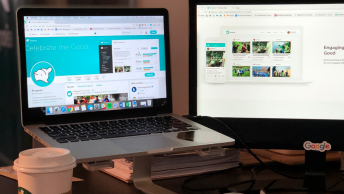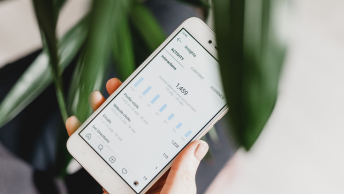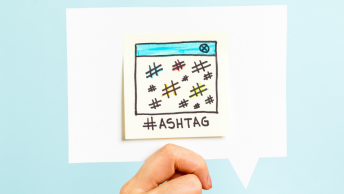Do you want to know how to avoid negative brand associations when you use Facebook and Google Ads? Here are some tools you can use to your advantage.
The Pros And Cons of Automation
Tech giants such as Facebook and Google have been focusing more and more on automation when it comes to how they advertise. This is no surprise, as automation is an exciting innovation that has been very useful to advertisers.
However, automation is not a perfect or complete solution. Occasionally there are some consequences of it. Due to automation, occasionally an ad will appear on a website that contradicts the values of the brand.
After some big issues with placing branded ads on controversial content in 2017, over a dozen of the world’s biggest brands pulled their money from YouTube advertising. This included giants like Verizon, AT&T, PepsiCo, and Starbucks.
Context Is Key
From an advertising point of view, that ad being placed there probably makes sense, however, things are not so cut and dry in practice. Context is still something that automation cannot fully grasp.
Nevertheless, you don’t need to worry. Both Facebook and Google offer options for when things like this occur. Here are some of the tools at your disposal and the steps that you can take to protect your brand from negative brand associations.
SEE ALSO: Why Brand Consistency Matters in the Ad Tech Age
What You Need To Know About Facebook

It is important that people understand that Facebook’s advertising solutions are not limited to just Facebook. When advertisers do what the site recommends, and have their ads displayed automatically, they are not just agreeing to have their ads appear on Facebook.
Many people don’t know that they are also consenting to use Facebook’s entire Facebook Audience Network. This is a network of publisher-owned apps and sites that work with the social media giant.
There is a reason that almost 20% of all digital ad spend in the US in 2018 was on Facebook. They have a massive network at their disposal and billions of users.
What You Can Do To Avoid Negative Brand Associations
The big problem with this is that there are thousands of apps and websites in this network. It is very unlikely that you want to be associated with all of them. However, there is good news. Facebook gives you the option to exclude publishers and content. You can do this in 2 ways:
- Block Lists
- Exclude Categories
Block Lists
On Facebook, you can choose to block the publishes of Instant Articles and In-Stream Videos. In the Audience Network, you can also make the decision to block specific apps and websites.
If you have a Business Manager with several ad accounts you can even connect a Block list to more than one ad account. You can also download a “Publisher list” to evaluate where your ads can possibly appear.
A recent tool offered by Facebook is Publisher Delivery Reports. Advertisers can download this to see where exactly their ads appeared.
Exclude Categories
Category exclusion prevents your ads from popping up in categories of content that you choose. These categories are quite like the ones you would find on YouTube. However, certain exclusions only apply for the Audience Network.
You will still be able to maintain control over where your ads will be displayed. For example, you can decide to choose only “safe” places for display such as Instagram or Facebook Stories. These take up the whole screen and will protect your ads from being placed in unfortunate contexts at random.
Let’s Take A Look At Google
Google actually offers a number of brand safety options and strategies. If solutions such as Google Preferred are not within your budget, maybe one of these will suit you better when it comes to avoiding negative brand associations.
SEE ALSO: 7 Free Google Tools All Digital Branders Should Use
Using Managed Placements
Using managed places gives you manual control over where your ads appear. If you only use managed placements for your YouTube/Display campaigns, you will have direct control over where exactly your ads do and do not appear.
However, this limits the power of having huge access to a network that could potentially give you millions of ad placements. You want to get the benefits of wide placements while avoiding negative brand associations.
Using Exclusions

For many digital branders running ad campaigns through Google, the exclusion of placements and content categories is far more realistic. So, with this option, what exactly do you have the power to exclude?
- YouTube Channels
- YouTube Videos
- Apps
- Categories
In order to do this, log into your account, go to placements, and select “add placement exclusion” and “exclude from account” to exclude the placements you desire.
You can also make use of whole entire exclusion lists. However, unless you are a member of a large organization with vast and researched blacklists at your disposal, you likely will not know all the places you don’t want your ads to appear to start off with.
This is why knowing what type of content you don’t want is more useful than knowing the names of a bunch of websites.
Some Important Options
When you set up exclusion at an account level, there are a number of options that you can personally control.
Inventory Type For YouTube Campaigns
When you use this option, it allows you to pick a category of content curated by Google that your ads can appear in. If digital brand safety is very important to you, choose the “limited inventory option.” You can also choose from “standard inventory” or “expanded inventory.”
Excluded Content
This option lets you specifically choose the kind of content you do not wish your ads to be associated with. This all depends on your brand. For example, you may be alright with being associated with sexual themes, but not profanity. Maybe you want to avoid controversial social issues. It is simple to pick and choose which types of content can broadly appear alongside your ads to avoid negative brand associations.
Excluded Types
With this option, you can exclude content based on maturity level and other content types. You can also control how it is viewed when it is placed to an extent.
Brand Protection And Avoiding Negative Brand Associations

Once you choose your categories and make your blacklists and choose options which suit your brand, your work is not done. In order to uphold brand safety, you need to run regular reports on where your ads appear and exclude any unwanted and inappropriate placements.
SEE ALSO: 5 Easy Ways to Protect Your Brand Image
Depending on your ad campaign, your ad might have popped up in hundreds of places, making it a difficult task to fully assess every place it appeared. One tactic you can use is to look at the places where your ad got the most impressions, and see if any of those places are inflammatory, inappropriate, or contradictory to your brand values.
Then you can blacklist them and avoid further negative brand associations.
Have you ever come across any poorly placed ads and did it make you think less of the brand attached to them? Comment below…











